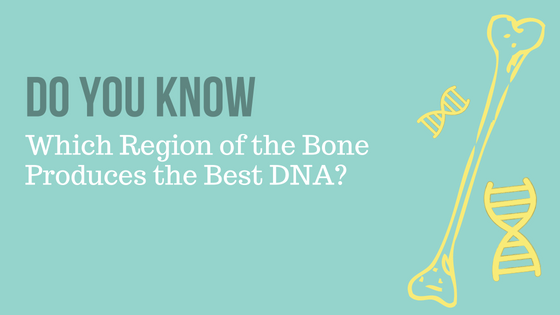Identification of human remains is critical to establishing the name of the victim and building a case against a suspect. While it would be ideal if DNA samples provided to the lab were in pristine condition, this is rarely the case. Identification gets trickier as the remains begin to decompose, and becomes increasingly difficult when all that is left is the skeleton.
Written By: Tara Luther, Promega
Where anthropologists were once called in to assist in these types of investigations, over the past several years, DNA analysis has come to supplement anthropological examination, especially in cases where an incomplete skeleton has been recovered. Whether or not DNA analysis is successful depends on many factors, including: retrieving DNA from the bone, removal of PCR inhibitors, and the quantity and quality of the DNA recovered. These factors are influenced by time, temperature, and environmental exposure.
As efficiency is top of mind in a lab, there have been studies done on which bones are most likely to yield DNA results. Previous research done by Misner et al showed that bone type influenced the likelihood of recovery, and that femora produced the best results, followed by ribs, and then the pelvis. Work done by the U.S. Armed Forces DNA Identification Laboratory (USACIL) revealed that dense, cortical regions of weight-bearing long bones (such as the femur or tibia) tended to retain DNA better than bones with a larger percentage of trabecular tissue (such as the skull, ribs, and vertebrae). Mundorff et al noted that other bones, like the patellae, tarsals, and foot phalanges could be equally useful for DNA analysis as the weight-bearing long bones.
Until recently, research had focused on which bones produced the best results, but there hadn’t been any studies that examined whether nuclear and mitochondrial DNA varied in quantity and quality within individual bones. In a recent publication of The Journal of Forensic Sciences, Antinick et al of Michigan State University set out to test which parts of the bone would produce the best results.
Antinick et al focused on femora, as these bones were most often used for identification purposes, and compared them to tarsal bones, which are more trabecular in nature. The team used samples from bones of pigs and cows, deciding to macerate and assay one collection of bones. A second collection was subjected to outdoor exposure and intermittent testing throughout a six-month period. In total, 3,200 assays were conducted to provide a comprehensive evaluation of intra-bone variation in mitochondrial and nuclear DNA quantity and quality.
After testing all of the bones, Antinick et al reported that the epiphyses (end parts of the bone) returned the highest levels of nuclear and mitochondrial DNA when working with fresh bones. This was followed up by the metaphyses (where the bone begins to narrow) and muscle attachment site, with diaphysis (shaft of the bone) returning the least amount of DNA. The team noted that the quality of DNA recovered was similar regardless of the bone region sampled.
When examining environmentally exposed bones, Antinick et al reported that the quantity of both mitochondrial and nuclear DNA recovered from surface-exposed bones remained fairly consistent over time. Those bones that were buried told a different story, however. The DNA yields in these bones decreased significantly over time. Similar to the fresh bones, the ends of the bone yielded significantly more DNA than the bone shaft. Overall, there was no difference in nuclear DNA quality detected when looking at the region sampled in surface-exposed bones, and DNA quality was not significantly altered with length of burial.
In the past, it’s been recommended to analysts to extract DNA from the mid-diaphysis when possible, but this research starkly contradicts this. Antinick et al state that this data has important implications for those that rely on skeletal material for DNA analyses and identifications, such as a forensic anthropologist or biologist.
Antinick et al could not say with certainty why one area of the bone may harbor more DNA than another. They do note that while the samples used were from fully grown animals, these animals were fairly young, which may have led to more DNA found in the epiphysis.
Ultimately, the team concluded that further research and an increased understanding of inter- and intra-bone DNA variability will lead to improved practices for recovering DNA, but their current research could influence an analyst’s decision on which bone and where in the bone to sample to optimize DNA recovery, assuming a choice exists.
WOULD YOU LIKE TO SEE MORE ARTICLES LIKE THIS? SUBSCRIBE TO THE ISHI BLOG BELOW!


